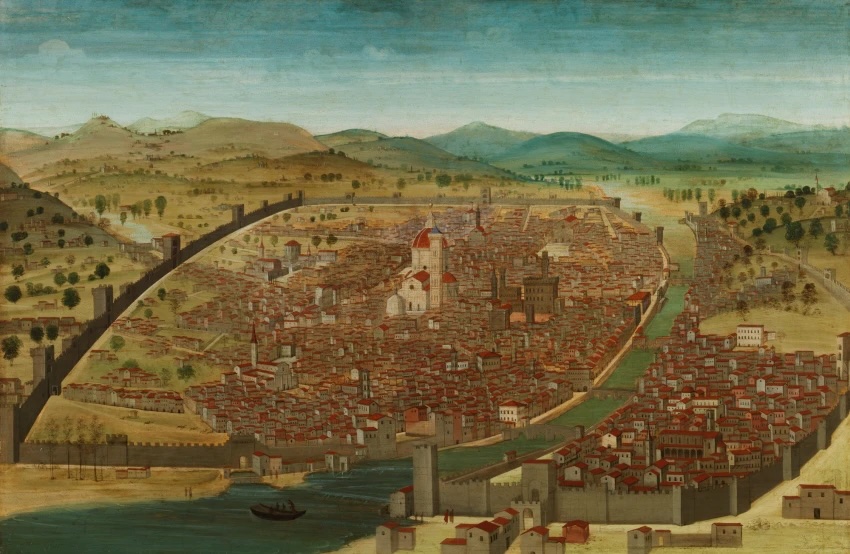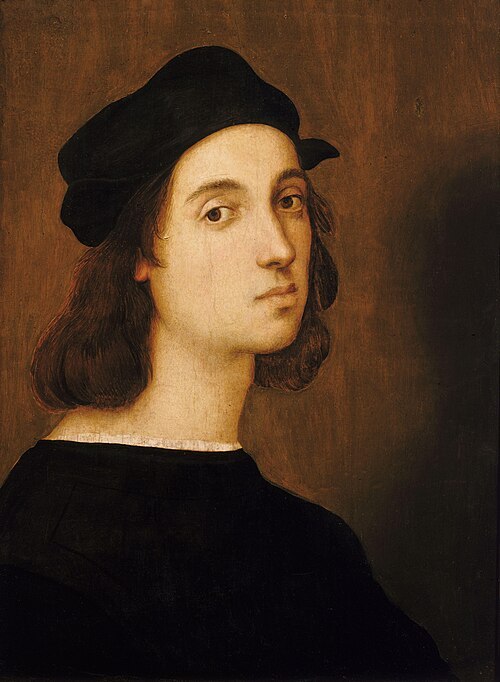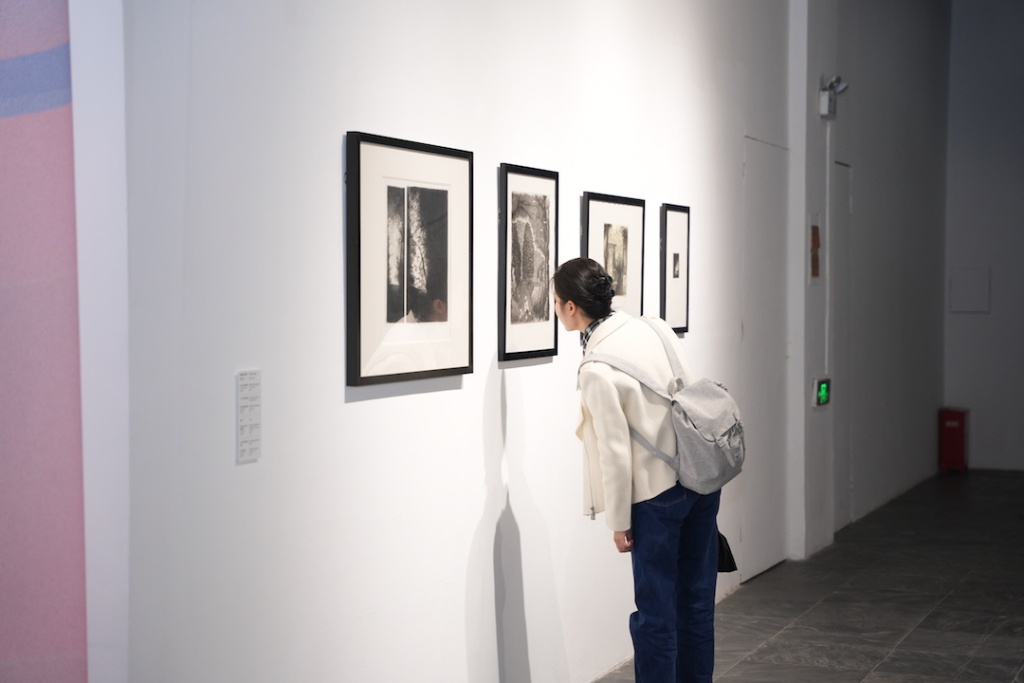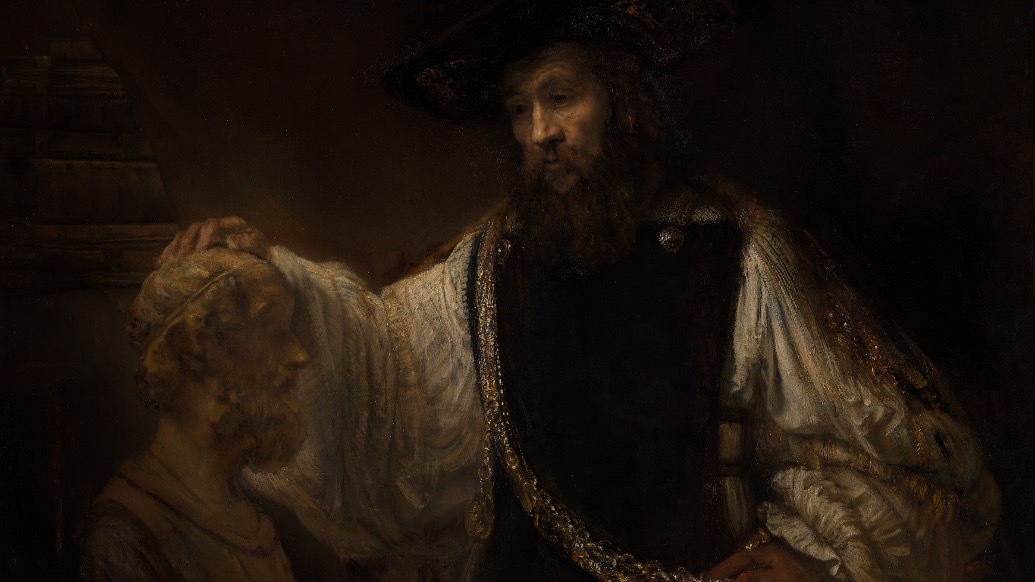
On January 25, 1504, Florence was unusually cold, with the Arno River nearly frozen. In a chilly room, nearly thirty people gathered to discuss the placement of a massive heroic statue so it could be admired in a public space. Among them were Botticelli, Da Vinci, and Filippino Lippi—the statue in question was Michelangelo's "David." However, Da Vinci suggested placing it at the back of the town hall corridor; Michelangelo even ridiculed Da Vinci for failing to complete his bronze horse sculpture in Milan, implying he lacked ability. Weeks later, the 21-year-old Raphael arrived in Florence and created a depiction of "David" in brown ink.
On November 9, the Royal Academy of Arts (RA) in London presented the exhibition "Michelangelo, Da Vinci, Raphael: Florence, circa 1504," focusing on the year 1504 when the three masters of the Italian Renaissance returned to Florence to explore the rivalry between Michelangelo and Da Vinci, along with their influence on the young Raphael.

Attributed to Francesco Rosselli and workshop, "Florence from the Southwest," circa 1495, egg tempera and oil on panel, 96×146 cm
It is well-known that Michelangelo's "David" was eventually placed in the most prominent square of the city, taking four days to be hoisted into position. The young Raphael may have traveled from Siena to Florence, where he witnessed the colossal statue and recorded it. Today, this depiction of "David" is showcased in the Royal Academy's exhibition. Through Raphael's perspective, one can imagine him standing behind this utterly familiar statue, observing the exquisite muscular lines carved into the marble; yet he slightly altered the proportions, reducing the overly large hands of David.
“Michelangelo, Da Vinci, Raphael: Florence, circa 1504” features around 40 works that illustrate how these three giants of the Renaissance inspired each other while competing. The connections between Da Vinci, Michelangelo, and Raphael (born in 1452, 1475, and 1483 respectively) come to life, providing a vivid sense of their thoughts and visions while in Florence.

Raphael, "Michelangelo's David," 1505-1508, pen and brown ink on paper, 39.6×21.9 cm
Three Masters of Renaissance Painting Drawing Inspiration from Each Other in Competition
The exhibition begins with Michelangelo's famous "Taddei Tondo." After completing the statue of David, Michelangelo was commissioned by Taddeo Taddei, a young wealthy patron whose family made their fortune in the wool trade, to create this round marble relief, in which Jesus is seen twisting out from Mary's lap. It was a fervent time in Florence for round works (tondo), and Michelangelo also painted the "Doni Tondo," portraying Mary turning sideways to Baby Jesus, who is resting on Joseph's lap.

Exhibition view, Michelangelo, "Madonna and Child with John the Baptist (Taddei Tondo)," circa 1504-1505, marble, diameter 106.8 cm
In the exhibition, this massive unfinished marble round sculpture is displayed alongside Michelangelo’s sketches of infants, revealing his preference for circular compositions and twisted dynamics. This reflects the trajectories of motion in his eyes, continuously rotating, with the lines of the sculpture and sketches imbued with restless tension. Michelangelo's depiction of these healthy infants makes them seem as if they are dancing. The exhibition also includes Michelangelo's earliest surviving sketches from his youth, drawn from his observation of Giotto's works in the Basilica of Santa Croce, where he deliberately gave one figure notably large hands.

Exhibition view
Taddeo Taddei was also Raphael's patron during his time in Florence. Raphael likely copied Michelangelo's "Taddei Tondo" while visiting the Taddei household. With quick sketch lines, he outlined the unique twisting positions of the Madonna and Child on Mary's lap, continuing to explore variations on this composition in his sketch for "The Bridgewater Madonna."

Raphael, "Study of Madonna and Child (
Raphael also copied Da Vinci's "Mona Lisa" and his now-lost "Leda and the Swan," making those works more rational and sweet. In fact, this exhibition cleverly transforms the themes of loss, incompleteness, and formlessness into a dramatic aesthetic.

Raphael, "Madonna, Child, and John the Baptist," circa 1508, egg tempera and oil on panel, 28.5×21.5 cm
The central gallery of the exhibition reaches a sublime peak. Much like stepping into a church, visitors can sit before Da Vinci's grand and enigmatic "Madonna and Child with Saint Anne and Saint John," experiencing the overwhelming scale of the work. The curator specifically points out that this painting is nearly four times the size of Da Vinci's "Mona Lisa" from his studio at the time. Viewers can observe the rugged ground and bare feet at their eye level, experiencing the smooth handling of charcoal and chalk, their gazes gradually ascending to focus on Saint Anne’s ghostly face and her hand pointing upwards. Here, one can not only witness the creative process of an art image but also appreciate an extraordinary visual spectacle.

Da Vinci, "Madonna and Child with Saint Anne and Saint John," circa 1506-1508, charcoal and white chalk on paper, mounted on canvas, 141.5×104.6 cm
This work interacts visually with Michelangelo's circular paintings in the exhibition hall, highlighting the focal points of each piece. In Michelangelo's composition, the Christ child's navel sits right at the center—everything rotates around him and his mother; Da Vinci, on the other hand, takes this concept to the extreme. The Madonna's palm gently cradles the Christ child's navel, even as he twists his body on her lap, reaching out toward little John beside him to bestow a blessing.
This drawing was not created for an oil painting, typical of Da Vinci’s style—it stands alone as a magnificent, complete wonder. In this context, the curator proposed a new insight—according to Giorgio Vasari, when Da Vinci showcased the sketch of "Madonna and Child with the Infant Saint John," the people of Florence flocked to see it, "to glance at Da Vinci's masterpiece, who amazed everyone with his work." The curator believes this may refer to the work described by Vasari that was displayed in a church in Florence.

“Michelangelo, Da Vinci, Raphael: Florence, circa 1504” exhibition view
The Duel of the "Battle of Anghiari" and the "Battle of Cascina"
In the golden period of Florence under Lorenzo de' Medici, Da Vinci and Michelangelo emerged. Due to their different ages and paths of development outside Florence, the two never met until they both returned to the city in what is referred to as "circa 1504."
Both men were commissioned by the Republic of Florence to create murals depicting scenes of war in the town hall. Initially, Da Vinci was tasked with painting the "Battle of Anghiari," commemorating Florence's victory over the mercenaries of Milan. Just as Da Vinci was ideating on this, Michelangelo was also commissioned to depict another battle on the same wall.

Circa 1550 by an anonymous Italian artist (after Leonardo da Vinci), enlarged and embellished between 1600-1608 by Rubens, "Battle of Anghiari ('Fighting for the Banner') (Detail)," 42.8×57.7 cm (original), 45.3×63.6 cm (later enlargement)
At the time, Florence had been “renewed” and, inspired by the priest Savonarola, a revolution overthrew the Medici family, establishing a republic elected by the people. Savonarola supported the new democratic assembly, which facilitated the construction of the Grand Council Hall, but he ultimately faced execution. Meanwhile, one of his critics—future author of "The Prince," Niccolò Machiavelli—rapidly rose to become an important political figure.
It was likely Machiavelli who devised the clever plan: to invite Da Vinci and Michelangelo to create historical scenes of the Florentine battles in the council hall to ignite the citizens' passions. Then, conflict erupted. Michelangelo mocked Da Vinci for not completing the bronze horse sculpture in Milan, hinting at his lack of ability. During a meeting to decide the placement of the statue of David being sculpted by Michelangelo, Da Vinci suggested it be set at the back of the town hall corridor.
Da Vinci’s "Battle of Anghiari" and Michelangelo’s "Battle of Cascina" opened the floor for a duel, but the "duel" does not hold a candle to comparison—Da Vinci comprehensively overshadowed Michelangelo. The latter half of the exhibition gathers a multitude of their preparatory sketches and replicas of battle scenes, making it difficult to divert attention back to Michelangelo.

Bastiano da Sangallo (from Michelangelo) "Battle of Cascina ('The Bathers')," circa 1532, oil on panel, 78.8×132.3 cm
Without the backdrop of its era, Michelangelo’s "Battle of Cascina" is perplexing. In a 16th-century replica, naked men are seen climbing out of a river; while in a gentle and sensitive sketch, Michelangelo illustrated this scene with a warmer sense of beauty. His portrayal of the back muscles is so vivid and powerful, it almost feels like witnessing a rugged mountainous landscape.

Michelangelo, "Male Nude," circa 1504-1505, pen, brown ink, and black chalk on paper, 37.4×22.8 cm
Michelangelo was not merely satisfying himself; he was also meeting Machiavelli's expectations. Renaissance history books recount a story: a Florentine army, swimming in the Arno River at Cascina,


